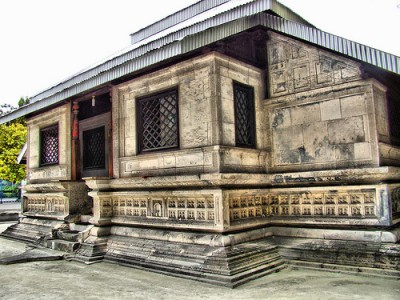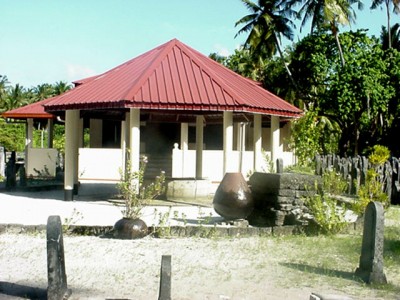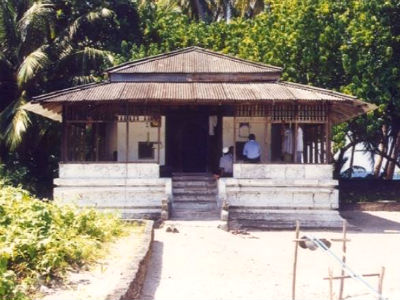The government is moving ahead with plans to transform the Maldives into a biosphere reserve through the designation of zones across the country that would earmark land use for specific purposes such as tourism development or conservation.
In approving the plan to transform the country into a “world renowned” marine reserve, members of the cabinet claimed there had been a growing number of visitors to areas such as Baa Atoll after it became a protected area.
While some tourism industry figures have welcomed existing efforts to transformation areas such as Baa Atoll into bio-reserves, concerns have been raised about the efforts taken to manage such zones in balancing tourism interests with preserving local habitats.
Zone strategy
Muhusina Abdul Rahman, an analyst for the Ministry of Environment and Energy, told Minivan News that the cabinet had opted to implement the action plan following a declaration by President Waheed at the Rio +20 summit last year to make the Maldives the world’s largest marine reserve.
“We consider this a good direction for development in the country, not just in terms of conservation, but as a means to improve livelihoods in a sustainable way,” she said.
In an attempt to implement the marine reserve plan, Abdul Rahman claimed that rather than impose nationwide restrictions on developments and activities that could be conducted in the country’s waters, special zones would be established instead.
“We have considered three zones that will set aside sensitive sites that would protect areas deemed crucially important to the environment,” she said.
The zones were at present expected to be separated into three categories ranging from conservation areas and “buffer zones” around these protected sites, to “transition” areas that would be able to be developed for industrial and other purposes.
According to Abdul Rahman, the action plan for the reserves had been drawn up alongside consultation with tourism authorities, NGOs, members of the fishing industry and various atoll councils.
The plans, which will form part of efforts to make the Maldives a “world-renowned biosphere reserve” by 2017 have been based on a paper submitted to the cabinet by the Environment Ministry, according to the President’s Office.
However, Abdul Rahman claimed that the implementation of the bio-reserve strategy was not expected to be without its challenges – not least in terms of negative public perception towards possible restrictions on livelihoods and businesses.
“I would like to mention that the pubic will also be able to to propose certain sites to be awarded protected status,” she added.
Biosphere designation
Baa Atoll was designated a UNESCO World Biosphere Reserve in 2011.
The development was claimed at the time to be a significant achievement for the Maldives by NGOs and state organisations, who highlighted the need for efficient management.
Almost two years on from being awarded the accolade, one resort general manager based in the atoll said the designation of the site as a bio-reserve had not changed operations at his property a “single bit”, despite claims from authorities about the significant marketing potential.
“The bio-reserve is certainly a nice thing to have here, but I don’t think so many people are coming here because of [the designation],” the general manager stated.
The resort head maintained that guests had been coming for some time to the area, which is renowned for sightings of whale sharks and manta rays. This was attributed in part to growing international attention on the nearby Hanifaru Bay, which has previously created challenges for local conservationists and resort operators.
However, the resort general manager said it was “a bit too early” to assess the significance of the UNESCO designation to the local environment and population of Baa Atoll.
“There are a lot of conservation organisations here with opinions on how to manage the site, but it’s taking a long time to reach agreements. I have myself expressed concerns that it is taking too long to devise how the areas should be used,” the resort head said.
The general manager added that the next meeting of local stakeholders to decide a plan for managing the biosphere for the next year had been scheduled for March, further setting back potential benefits for the industry and conservationists.
“By March, one quarter of the year will already have gone. There is definitely strong potential here for the reserve, but by then, the manta season may be over and we will still be waiting to vote on a plan for how it will work,” the source added.
Tourism impacts
Beyond the establishment of high-profile sub-aquatic spas and restaurants in the country, some resorts are opting to play up the emergence of nearby protected marine parks and reserves.
Within the seclusion of the country’s northerly Noonu Atoll, the Hilton Iru Fushi resort is one property that in recent years has been working with the country’s first Marine National Park (MNP) at Edu Faru in a bid to play up the surrounding natural appeal of the area for guests.
The MNP’s management told Minivan News last year that after signing a Memorandum of Understanding (MOU) with the previous government in August 2011, guests staying at certain nearby properties like the Iru Fushi resort were cautiously welcomed to explore the protected underwater habitats.
“The project is still in its early development stages and we are working towards having an official opening ceremony at the end of 2013,” said a representative for the MNP at the time. “The level of protection is yet to be determined in collaboration with the government and experts in the field.”
A representative for the MNP claimed last year that balancing tourist interest in the area with the need to preserve coral and other inhabitants would always create “ecological challenges” for its operations, but it was working to overcome them nonetheless.
“The MNP will rely on marine-based tourism such as scuba diving and snorkelling,” the MNP spokesperson said at the time ”We strive to achieve a balance between recreational use and preservation of ecological values that form the MNP and the biological carrying capacity and prevent overuse of the site.”
Meanwhile, back in November Deputy Tourism Minister Mohamed Maleeh Jamal claimed destinations like Baa Atoll were helping the area become a “premium destination within a destination”, adding further value to properties located in an area of strong natural interest.
Along with the potential benefits of operating as a marine reserve, Maleeh claimed that the country’s status of being a protected marine reserve would not itself impact on the type of tourism developments being sought in the Maldives.
These plans have included ambitious proposals such as the construction of five man-made islands to support leisure developments including a 19-hole golf course in the Maldives.
Maleeh said he did not think these type of projects would be threatened by the Maldives protected reserve status, with developers still being required to work within existing environmental laws that impose several restrictions on the amount of development possible on each island.
“All plans are required to undergo an Environmental Impact Assessment (EIA) and resort developers are very good at working within these parameters,” he said.
In September 2012, a marine biologist working in Baa Atoll reported the discovery of the remains of a baby shark and endangered sea turtle barbecue on the uninhabited island of Funadhoo, one of the country’s 14 priority nesting beaches legally protected under Maldivian law.
Likes (0)Dislikes
(0)Dislikes (0)
(0) 



